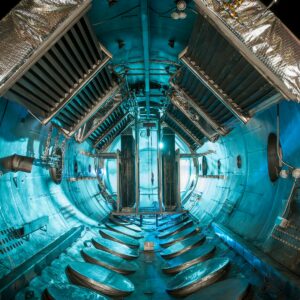In the world of science fiction, boundaries are pushed far beyond the limits of our current capabilities, often resulting in the depiction of technologies that seem unimaginably advanced. Yet, the line between fiction and reality has been blurred repeatedly as numerous inventions, once solely the province of imaginative filmmakers, have transitioned into tangible innovations, integrated into the fabric of everyday life. This journey from the silver screen to the palms of our hands is not only a testament to human ingenuity but also highlights the profound influence that science fiction has on technological advancement. In this post, we explore some of the most iconic inventions that leaped from the realms of science fiction cinema into our reality.
Video Calling and Teleconferencing
Long before the first video call was made, science fiction films such as “2001: A Space Odyssey” (1968) showcased characters engaging in what appeared to be futuristic video conferencing. The film featured astronauts communicating with Earth via video calls, a concept that seemed far-fetched at the time. Fast forward to today, and video calling has become a staple of personal and professional communication, with platforms like Zoom, Skype, and FaceTime making what was once a sci-fi fantasy an everyday reality.
Virtual Reality (VR)
Virtual reality has been a staple of science fiction for decades, offering viewers a glimpse into worlds where the boundaries between the real and the virtual blur. Films like “Tron” (1982) and “The Lawnmower Man” (1992) explored the concept of fully immersive virtual environments, long before the technology existed to make them a reality. Today, VR is not just a form of entertainment but is also used in training, education, and therapy, with devices like the Oculus Rift and HTC Vive making immersive virtual experiences accessible to all.
Artificial Intelligence (AI) and Robotics
The idea of artificial intelligence and robots with human-like capabilities has fascinated filmmakers and audiences alike, with iconic characters like R2-D2 and C-3PO from “Star Wars” (1977) and the sentient computer HAL 9000 from “2001: A Space Odyssey.” While early portrayals often depicted AI and robots as either benevolent helpers or rogue entities, the reality of AI in our world today is both practical and ubiquitous. AI powers everything from personal assistants like Siri and Alexa to complex algorithms that drive search engines and social media platforms. Meanwhile, robotics has advanced to produce autonomous vehicles, surgical robots, and service robots in various industries.
Tablet Computers
The concept of a portable, flat-screen computer was once a figment of science fiction imagination. Stanley Kubrick’s “2001: A Space Odyssey” again leads the charge, showing characters using devices remarkably similar to today’s tablets. This vision of portable computing technology has been realized in products like the iPad, Android tablets, and Microsoft Surface, which have become integral tools for work, education, and entertainment.
Wearable Technology
Wearable technology, such as smartwatches and fitness trackers, was once the domain of science fiction, with characters in films like “Dick Tracy” (1990) using wristwatch radios and communicators. Today, devices like the Apple Watch and Fitbit have made these concepts a reality, offering a range of functionalities from communication to health monitoring, proving once again that the imaginations of filmmakers often pave the way for real-world innovations.
 Space Exploration Technologies
Space Exploration Technologies
Space exploration has always been a favorite theme of science fiction, with films like “Star Trek” and “Interstellar” depicting advanced spacecraft and interstellar travel. While we may not yet have warp drives or wormholes, the technology used in space exploration has made significant leaps, inspired by the visions set forth in these films. Reusable rockets, as developed by companies like SpaceX, are a step toward the kind of sustainable space travel often depicted in science fiction, making the dream of Mars colonization seem increasingly attainable.
3D Printing
The concept of creating objects seemingly out of thin air was once pure science fiction, shown in movies through replicators and fabrication devices. Today, 3D printing technology has brought this idea to life, allowing for the creation of everything from simple household items to complex components for aerospace and medical applications. This technology’s impact on manufacturing, medicine, and even food production is profound, echoing the fantastical capabilities imagined in science fiction.
Autonomous Vehicles
The dream of self-driving cars has been a recurring theme in science fiction, with films like “Total Recall” (1990) featuring autonomous taxis. The development of autonomous vehicles has now progressed significantly, with companies like Tesla, Waymo, and others conducting extensive testing to make self-driving cars a common sight on our roads. While there are still hurdles to overcome, the direction is clear: a future where cars drive themselves is on the horizon.
Conclusion
The relationship between science fiction and real-world technology is a cyclical one, with each inspiring advancements in the other. What begins as a fantastical concept in a filmmaker’s vision can spark the curiosity and ambition of scientists and engineers, leading to real-world technologies that, in turn, inspire new stories. This interplay highlights the importance of imagination and creativity in the advancement of technology. Science fiction doesn’t just predict the future; it plays a pivotal role in shaping it.


